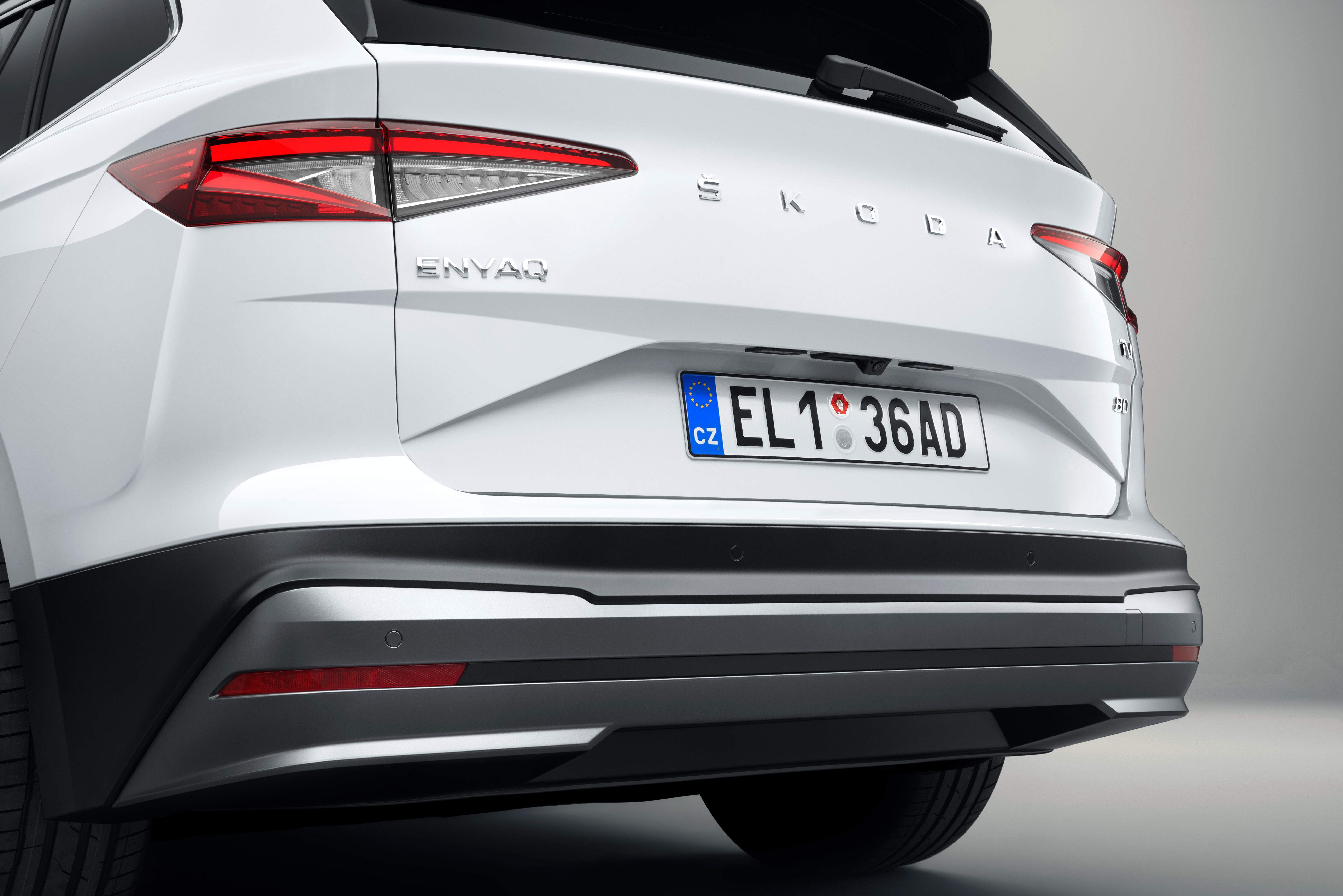› The ŠKODA ENYAQ iV features supreme active and passive safety, and plenty of innovative assistance systems
› The electric SUV is the first ŠKODA to offer a head-up display including augmented reality
› New convenient assistance for when parking
Mladá Boleslav, 1 September 2020 – Boasting numerous assistance systems and up to nine airbags, the ENYAQ iV provides the highest level of active and passive safety. What’s more, new features make it easier to park.
ŠKODA is offering its ENYAQ iV customers all of the innovative, new safety and assistance systems. The SUV can automatically warn of collisions with other vehicles, cyclists, pedestrians and fixed obstacles, ideally preventing an accident completely or at least minimising its consequences. Up to nine airbags protect the occupants in the event of an accident. Proactive Crew Protect Assist automatically tensions the seat belts during emergency braking and closes the windows and the panoramic sliding roof in the event of an impending collision, or if the car is in danger of skidding or tipping over.
The ENYAQ iV is equipped with LED headlights and tail lights as standard, whilst full LED Matrix headlights and full LED tail lights in a ‘C’ shape are available as options. Each Matrix high-beam module contains 24 LEDs, which can be controlled individually and enable the driver to have the high beam on at all times without dazzling other road users. If a camera on the windscreen detects vehicles as well as people and objects reflecting the light, the intelligent lighting technology automatically turns off individual segments of the light beam.
Two areas for the head-up display
The ENYAQ iV is the first ŠKODA to come equipped with a head-up display featuring augmented reality, which projects information onto two different areas. In addition to the current speed and detected traffic signs, information from the assistance systems and navigation instructions can also be displayed on the windscreen just above the dashboard in immediate view of the driver. The projection zone for augmented reality is larger and is located higher up on the windscreen, still in clear view of the driver. It is directed onto the road up ahead of the vehicle, where larger symbols such as directional arrows indicate navigational instructions, information relating to Adaptive Lane Assist or Adaptive Cruise Control is shown, and traffic signs or warnings are displayed. The driver can individually adjust the position of the display area on the windscreen, set the colour and brightness, and select what information is to be shown in the infotainment system’s menu.
New, innovative assistance systems boost safety
In the event of an impending collision with a pedestrian, cyclist or another vehicle, Collision Avoidance Assist for example supports the driver by actively increasing the steering moment to prevent the accident using a controlled evasive manoeuvre. When turning left at junctions, Turn Assist detects oncoming traffic at an early stage, warns the driver and automatically brings the car to a stop if necessary. When a door is opened, Exit Warning alerts the occupant if another vehicle or a cyclist approaches from behind. It does this acoustically and visually via a light signal on the inside of the wing mirror housing.
Travel Assist comprises Adaptive Cruise Control, Adaptive Lane Assist including roadwork recognition, Traffic Jam Assist and Emergency Assist. In a higher configuration level, Travel Assist can take over lateral steering in narrow spaces using online information based on current data clusters – even in the city. Adaptive Cruise Control, which in its predictive version also incorporates route data from the navigation system and traffic signs, will also be able to react to obstacles reported via online traffic data too.
Enhanced functions for Park Assist
In the future, new vehicles will benefit from an innovative Park Assist function, which is currently under development. This will enable cars to manoeuvre into both bay and parallel parking spaces and also autonomously exit from parallel spaces. Additionally, the next iteration of this assistant will be able to automatically brake and prevent potential collisions with pedestrians or objects.
The Remote Parking function will go one step further, allowing the new vehicle to enter and leave tight parallel and bay parking spaces while the driver will remotely control the vehicle through the ŠKODA Connect app on their mobile. The assistant will autonomously control both steering and braking. Additionally, the Park Assist function will be expanded to include a new Trained Parking feature. Initially, the driver manually performs a parking manoeuvre into a frequently-used space, for instance, a narrow, winding driveway. The system saves the entire route, allowing the vehicle to navigate to the parking spot autonomously at the push of a button. Here too, the system will take over the steering and brakes and prevent collisions.

Hermann Prax
Head of Product Communications
T +420 734 298 173
hermann.prax@skoda-auto.cz
Štěpán Řehák
Product Communications
T +420 734 298 614
stepan.rehak@skoda-auto.cz



















